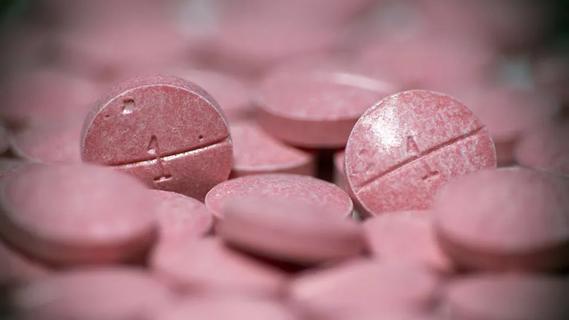Rinses, sitz baths, ice and medication can help the healing

Bringing a baby into the world is magical. The vaginal tearing that may come with it is less magical.
Advertisement
Cleveland Clinic is a non-profit academic medical center. Advertising on our site helps support our mission. We do not endorse non-Cleveland Clinic products or services. Policy
Your vagina and perineum naturally stretch during birth, but it’s not always wide enough for your arriving baby. As your newborn passes through, an obstetric tear may occur — especially if it’s your first delivery.
“Tearing is common and happens in more than 85% of births,” says Ob/Gyn Suzanne Young, DO. “Fortunately, most tears heal without any long-term complications.”
Here’s what you need to know.
What’s often called a vaginal (or obstetric) tear typically occurs in your perineum, the narrow area of tissue between your vaginal opening and anus. The perineum is part of your pelvic floor. Muscles and nerves in this area support your pelvic cavity and help you pee, poop and experience sexual arousal.
Childbirth also can cause tears to your vagina, vulva or anus.
Healthcare providers classify vaginal tears from first- to fourth-degree. First is the least severe, while fourth is the most severe. Here’s what each degree tear typically brings:
Advertisement
Second-degree tears and higher may require stitches. Severe tears may require an operation for repair.
“Most perineal tears are first or second-degree,” says Dr. Young. “Third- and fourth-degree tears occur in less than about 10% of deliveries.”
Most vaginal tears feel better in a few weeks and heal completely by your six-week postpartum visit. “If you had stitches, they will dissolve during the healing process,” says Dr. Young. “You typically feel a little better every day.”
Sometimes, vaginal tears take longer to heal due to:
There’s a lot to manage when you come home after giving birth. You’ve got a new baby and possibly other kids at home. But self-care is important, too — especially after an obstetric tear.
The main goals when caring for a vaginal tear are to:
Dr. Young recommends these six steps to help you heal:
Keeping a wound clean is essential. Your care team at the hospital will give you a squirt bottle called a peri bottle designed for this purpose. Fill the bottle with warm water and gently rinse down below after you pee or poop.
Soaking in warm water promotes blood flow to the area to speed the healing process. The easiest way to do this is using a sitz bath, says Dr. Young.
A sitz bath is a basin you put on top of your toilet. Fill the basin with warm water and sit in it for a few minutes several times per day. You may receive a sitz bath from the hospital as part of your going-home care package. They’re also widely available online and in drug stores.
Aggressive drying can undo stitches and irritate healing tissue after a vaginal tear. Gently pat the area dry with toilet paper or a clean towel after using the bathroom, showering or using a sitz bath.
Ice helps relieve pain and inflammation and is a standard treatment immediately after delivery. At home, ice your perineum using a:
Make sure you’re using clean ice bags or packs. Anything unsanitary can introduce germs to the area and cause an infection.
Over-the-counter medications can help relieve pain from vaginal tears. Try:
Advertisement
For more severe pain, your provider may prescribe a stronger pain reliever.
“Most pain medications are safe to take while breastfeeding (chestfeeding),” notes Dr. Young. “A very small amount of medication passes into breastmilk, so we usually encourage people to continue breastfeeding.”
Let your provider know if you have any concerns about the safety of taking medications while breastfeeding.
A vaginal tear may make sitting uncomfortable. Ease the pressure on your perineum by lying down or sitting on a soft surface. Specially designed donut pillows can also provide relief by shifting the weight from your perineum when sitting.
To speed the healing of a vaginal tear, try to avoid:
Constipation is a common problem after childbirth, but straining to poop can disturb the stitches in your perineum. If you have a vaginal tear, a laxative or stool softener can keep things moving smoothly.
“We often recommend taking over-the-counter laxatives right after delivery to prevent constipation,” says Dr. Young. “Once constipation occurs, it’s more difficult to treat.”
Drinking enough water and eating high-fiber foods such as fruits, vegetables and whole grains can also help you have regular (and less rock-hard) bowel movements.
Advertisement
Healthcare providers generally recommend waiting at least six weeks after delivery to have sex. You may have to wait longer if you have a more severe vaginal tear.
“Ask your provider when it’s OK to have vaginal sex,” advises Dr. Young. “We want to make sure everything is well-healed before giving the green light.”
As a new parent, you have a lot on your plate. But taking it easy, especially during the first few days after delivery, can help start the healing process. Don’t push your body too hard.
Make an appointment with your healthcare provider if you feel like your vaginal tear isn’t healing properly or something seems off. Signs of potential trouble include:
Obstetric tears that don’t heal properly can lead to complications such as:
These problems can be difficult to talk about, but your provider can help. “We may recommend pelvic floor physical therapy or refer you to a pelvic floor dysfunction specialist (urogynecologist),” says Dr. Young.
Advertisement
Vaginal tears are common but treatable, reassures Dr. Young. If you have one, your healthcare provider will review care instructions with you before you go home. With proper treatment, tears usually heal without complications.
Just make sure to take time to care for yourself and your own healing in addition to any new baby duties.
Learn more about our editorial process.
Advertisement

Bleeding is a risk and warrants taking care, but the reward of this lifesaving medication is great

Severe and debilitating headaches can affect the quality of your child’s life

With repeat injections over time, you may be able to slow the development of new wrinkles

Although it can be alarming, it’s normal to experience blood clots during menstruation

Stretch before heading outside, keep proper form and avoid jerking or twisting to throw snow

Type 2 diabetes isn’t inevitable with these dietary changes

Applying a hot or cold compress can help with pain